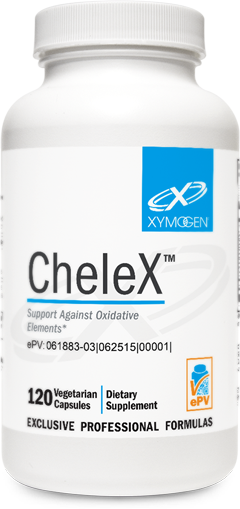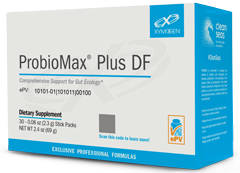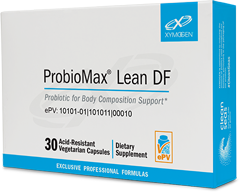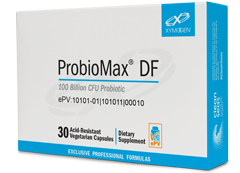HistDAO™ 60 Tablets Supports Healthy Degradation of Food-Derived Histamine*
HistDAO™ 60 Tablets Supports Healthy Degradation of Food-Derived Histamine*
Clinical Applications
Supports Healthy Degradation of Food-Derived Histamine*
Enhances the Presence of Diamine Oxidase in the Digestive Tract*
Description:
HistDAO™ is an enzyme formula containing diamine oxidase (DAO)—the main enzyme responsible for the degradation of ingested histamine. This enzyme has been clinically tested and found to break down food-derived histamine in the digestive tract. DAO is not absorbed and does not have systemic activity. HistDAO does not manage or address antibody-related or IgE-related food allergies.*
Directions
Take one tablet no more than 15 minutes before the consumption of histamine-rich foods, or take as directed by your healthcare professional.
Consult your healthcare professional prior to use. Individuals taking medication should discuss potential interactions with their healthcare professional. Avoid if allergic to pork or any other ingredient. HistDAO™ is NOT EFFECTIVE for symptoms of immune-related food allergies, such as peanuts, shellfish, etc., or for gluten intolerance due to sensitivity or celiac disease.
Storage
Keep closed in a cool, dry place out of reach of children.
Formulated to Exclude
Wheat, gluten, corn, yeast, soy, dairy products, fish, shellfish, peanuts, tree nuts, egg, sesame, ingredients derived from genetically modified organisms (GMOs), artificial colors, and artificial sweeteners.
Trademarks
DAO Enzyme manufactured by DR HEALTHCARE, S.L.U., for XYMOGEN under Patents
Other Ingredients
Microcrystalline cellulose, hydroxypropyl cellulose, coating (ethylcellulose, sodium alginate, hydroxypropyl methylcellulose, medium-chain triglycerides, stearic acid, oleic acid, and microcrystalline cellulose), sodium starch glycolate, and magnesium stearate.
Histamine is a bioactive or “vasoactive” amine produced in the body in response to an injury or foreign substance. It has an array of physiological effects, including increasing blood supply to specific sites in the body. In addition, histamine is involved in the immune response, regulation of gastric acid, permeability of blood vessels, contraction of muscles, and the normal response to inflammation.[1] The highest concentrations of histamine in the body are found in the gastrointestinal tract, lungs, and skin, with lesser amounts in the brain and heart.*
Histamine is not only produced in the body but is also present in many fermented foods, such as sauerkraut, sausage, cheese, yogurt, and alcoholic beverages. Tuna, olives, spinach, eggplant, avocados, tomatoes, cherries, and citrus fruits are other histamine-containing foods. Despite their absence of histamine, some foods, such as berries, tea, and a variety of spices, stimulate the endogenous production of the amine due to their benzoate content. In addition, microbial fermentation can convert the histidine in high-protein foods to histamine so that the histamine content of food can increase over time.*[1]
Histamine/DAO balance Endogenous and exogenous histamine must be broken down in order to maintain homeostasis and histamine balance. The enzyme diamine oxidase (DAO) degrades histamine
by converting it from 2-(4-imidazolyl)-ethylamine to the inactive metabolite imidazole acetaldehyde.[2] The active ingredient in HistDAO is porcine-derived diamine oxidase, and research suggests that DAO derived from porcine kidney appears to have identical action to DAO derived from porcine intestine.[3] In humans and other mammals, DAO is found in high concentrations in the gastrointestinal mucosa. Animal studies suggest that circulating DAO may be a marker for mucosal integrity and maturity.[4] Certain drugs may affect histamine balance in the body by promoting histamine release or inhibiting DAO.*[2]
Histamine Tolerance Histamine tolerance may not be the same for everyone. Results of a double-blind, placebo-controlled crossover study suggest that tolerance to histamine can vary from individual
to individual.[5] Total body histamine load must be considered when evaluating histamine tolerance, and a balance between histamine and DAO appears to be crucial to maintaining skin, rhinoconjunctival, and gastrointestinal health.[2,6] Genetic and environmental factors may interact to influence DAO expression. Ongoing research addresses the role that genetic variations may play in individual differences in DAO metabolism, and serum activity was significantly associated with seven single nucleotide variations within the DAO gene.[7,8] Histamine tolerance may be reflected in detailed questionnaires, food intake logs, trial with low-histamine diet, and measurement of DAO and histamine.*[9,10]
Histamine tolerance and its manifestation may vary from organ to organ as well. A study of 39 patients suggested that intake of DAO produced a statistically significant reduction in symptoms associated with exogenous histamine ingestion, although single symptoms were not found to be reproducible.*[11]
Ultimately, diminished serum DAO levels appear to be associated with changes in histamine degradation and serum histamine levels.[10] Although the mechanism of histamine degradation is uniform throughout the body, HistDAO only addresses excess exogenous histamine found in the folds, villi, and microvilli of the small intestine. HistDAO is not absorbed and therefore does not have systemic activity. A two-capsule dose of HistDAO contains 20 mg of vitamin C, 200 mg of calcium, and 20,000 HDU (histamine degrading units). HistDAO is NOT EFFECTIVE for symptoms of immune-related food allergies, such as peanuts, shellfish, etc.*
Directions:
Take one to two capsules no more than 15 minutes before the consumption of histamine-rich foods, or take as directed by your healthcare practitioner.
References:
1. Histamine Intolerance. http://www.allergynutrition.com/faq.php. Accessed April 19, 2012.
2. Maintz L, Novak N. Histamine and histamine intolerance. Am J Clin Nutr 2007;85:1185-1196. [PMID: 17490952]
3. Schwelberger HG, Bodner E. Purification and characterization of diamine oxidase from porcine kidney and intestine. Biochim Biophys Acta. 1997 Jun 20;1340(1):152-64. [PMID: 9217025]
4. Luk GD, Bayless TM, Baylin SB. Diamine oxidase (histaminase). A circulating marker for rat intestinal mucosal maturation and integrity. J Clin Invest. 1980 Jul;66(1):66-70. [PMID: 6772669]
5. Wöhrl S, Hemmer W, Focke M, et al. Histamine intolerance-like symptoms in healthy volunteers after oral provocation with liquid histamine. Allergy Asthma Proc. 2004 Sep-Oct;25(5):305-11. [PMID: 15603203]
6. Kuefner M, Schwelberger HG, Weidenhiller M, et al. Both catabolic pathways of histamine via histamine-N-methyltransferase and diamine oxidase are diminished in the colonic mucosa of patients with food allergy. Inflamm Res 2004 Mar;53 Suppl 1:S31-2. [PMID: 15054605]
7. Igaz P, Fitzimons CP, Szalai C, et al. Histamine genomics in silico: polymorphisms of the human genes involved in the synthesis, action and degradation of histamine. Am J Pharmacogenomics. 2002;2(1):67-72. [PMID: 12083955]
8. Maintz L, Yu CF, Rodríguez E, et al. Association of single nucleotide polymorphisms in the diamine oxidase gene with diamine oxidase serum activities. Allergy. 2011 Jul;66(7):893-902. [PMID: 21488903]
9. Joneja JMV, Carmona-Silva C. Outcome of a Histamine-restricted Diet Based on Chart Audit. Journal of Nutritional & Environmental Medicine. 2001. 11:249-62. DOI:10.1080/1359084012010309.
10. Maintz L, Benfadal S, Allam JP, et al. Evidence for a reduced histamine degradation capacity in a subgroup of patients with atopic eczema. J Allergy Clin Immunol. 2006 May;117(5):1106-12. [PMID: 16675339]
11. Komericki P, Klein G, Reider N, et al. Histamine intolerance: lack of reproducibility of single symptoms by oral provocation with histamine: a randomised, double-blind, placebo-controlled cross-over study. Wien Klin Wochenschr. 2011 Jan;123(1-2):15-20. [PMID: 21165702]






